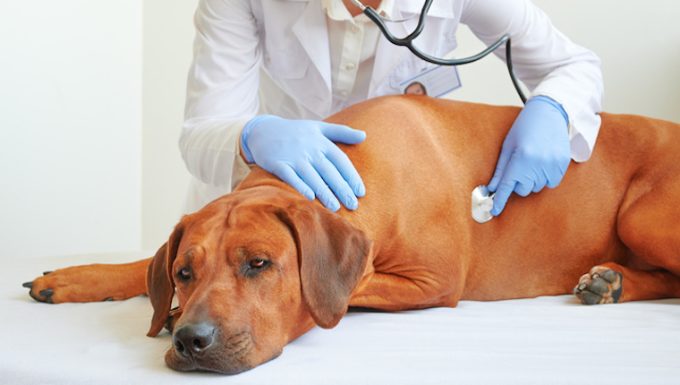Heart valve narrowing (mitral and tricuspid) in dogs affects blood flow. The condition causes high blood pressure and makes exercise hard.
Unfortunately, certain dog breeds including Labrador Retrievers and Old English Sheepdogs suffer from the condition more than others.
Technically, the condition is also called atrioventricular valvular stenosis.
If you see the signs of the condition in your dog, then get to a veterinarian for a proper diagnosis and treatment.
Here’s what you should know about the symptoms, causes, and treatments for the condition.
Symptoms of Heart Valve Narrowing (Mitral and Tricuspid) in Dogs
The condition produces a range of symptoms. For instance, some of the most common symptoms include:
- Breathing problems
- Fainting
- Finding exercise difficult
- Cyanosis (skin turning pale blue)
- Coughing
- Swelling (around the abdomen)
- Spitting with blood in it
- Growth being stunted
Causes of Heart Valve Narrowing (Mitral and Tricuspid) in Dogs

The cause of the condition is often congenital. This means that a dog is born with it. However, some of the other factors that might cause the condition include:
- Heart cancer
- Fibrous scarring
- Endocarditis
- Bacterial infection (of the heart)
Additionally, the following dog breeds are most at risk of suffering from the condition:
- Labrador Retriever
- Bull Terrier
- Newfoundland
- Great Dane
- Old English Sheepdog
Treatments for the Condition in Dogs
Firstly, your vet will ask about your dog’s symptoms. Secondly, your vet will ask about your dog’s complete medical history. This will include any breed-specific problems.
Thirdly, a full physical examination will be carried out. Blood and urine tests will be taken. Additionally, X-rays and an electrocardiogram (EKG) can monitor your dog’s heart function.
Ultimately, heart medicine is used to treat the condition. As always, if your vet prescribes your dog any medicine, make sure to stick to the correct dose and frequency instructions. Also, complete the full course of medicine.
While recovering at home, it is important to provide your dog with a quiet and calm environment. Also, keep up regular visits with your vet to monitor your dog’s heart function.
You can read more about general heart healthy tips for your dog here!
Have you ever cared for a dog who suffered from this condition? How did your vet help your dog recover? Let us know in the comments section below.




